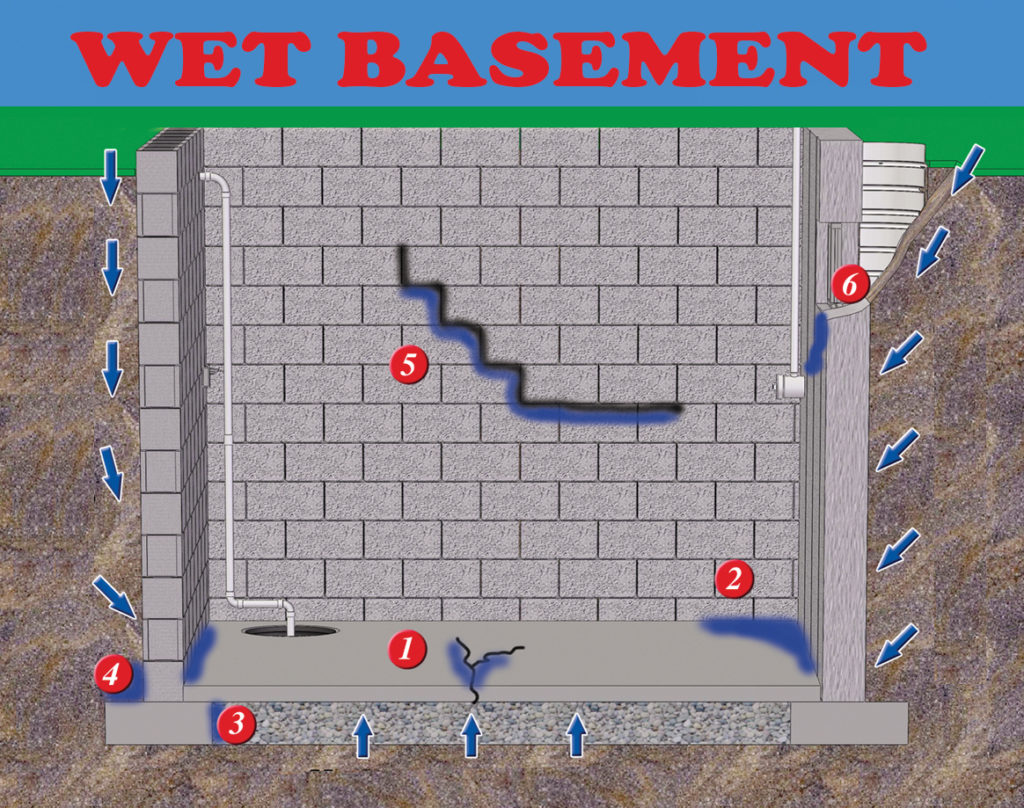Wet Basement Solutions
The two most common causes of water entering basements I have found are; poor landscaping and poor rain water management of water collected by roofs and discharged from downspouts.

Poor Landscaping
Many homes I have inspected have low areas which allow water to collect against or close to foundations. Concrete is not waterproof and water will weep through a poured concrete wall or enter through a crack. Some home owners create gardens against their house which effectively trap water in that location with no thought given to drainage. Another common area is under decks where often the lowest point is at the foundation. Remember when raising the grade to use soil and never used gravel or stone as fill.
Gutters & Downspouts
Every 1500 square feet of roof has the capability of collecting over 1,000 gallons of water for every inch of falling rain. This water is collected by your gutters and discharged through downspouts and extensions. Many home owners never pay attention to where there downspouts are discharging this large amount of water. I constantly see downspouts that are discharging water right against the foundation. This allows water table in that area to rise and also usually causes erosion and a path that water will always follow until problem is corrected. I often tell homeowners to take a walk around their home during a heave rain storm to see exactly where and how the water is being handled by their home and yard.
Water from downspouts can cause pooling of water against your foundation increasing the hydrostatic pressure against your foundation, which will eventually find its way into your basement. Rainwater or melted snow that isn’t routed away from the house is the most common cause of basement and crawl space moisture. Runoff percolates through porous topsoil and then stops at the compact soil near the base of the foundation. Hydro-static pressure forces the water through gaps or cracks in walls and footings. Water also moves through porous walls by capillary action. Most experts agree that you should have downspout extensions that will discharge water 8 to 10 feet away from your home.
Leaks in your building envelope can also cause water to find it way down your walls and into your basement. All exterior openings should be sealed with caulking and inspected at least annually for cracking or separation. Most home owners neglect their exterior caulking which can allow leaks and also cause damage to interior framing.
Condensation vs Leaking
The humidity in the air can turn to damp spots or puddles etc when it hits exposed foundation walls that are cold. To identify what is causing your problem you can tape a piece of foil over suspected areas and check the next day for moisture. If you have moisture on surface of the foil it is condensation that is causing the problem. If moisture is only under foil it is a water leak.

Recent Comments